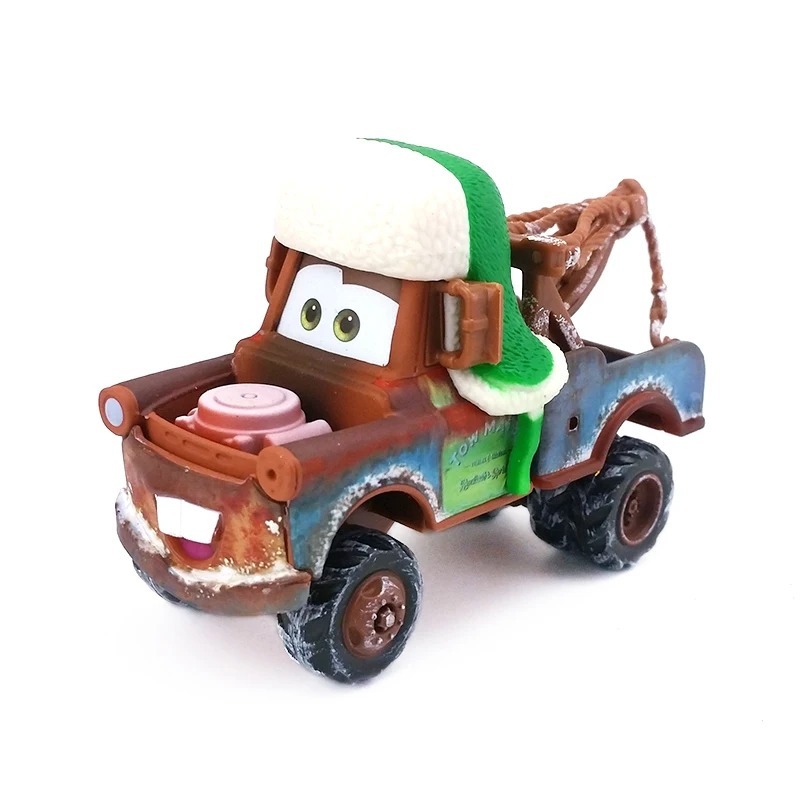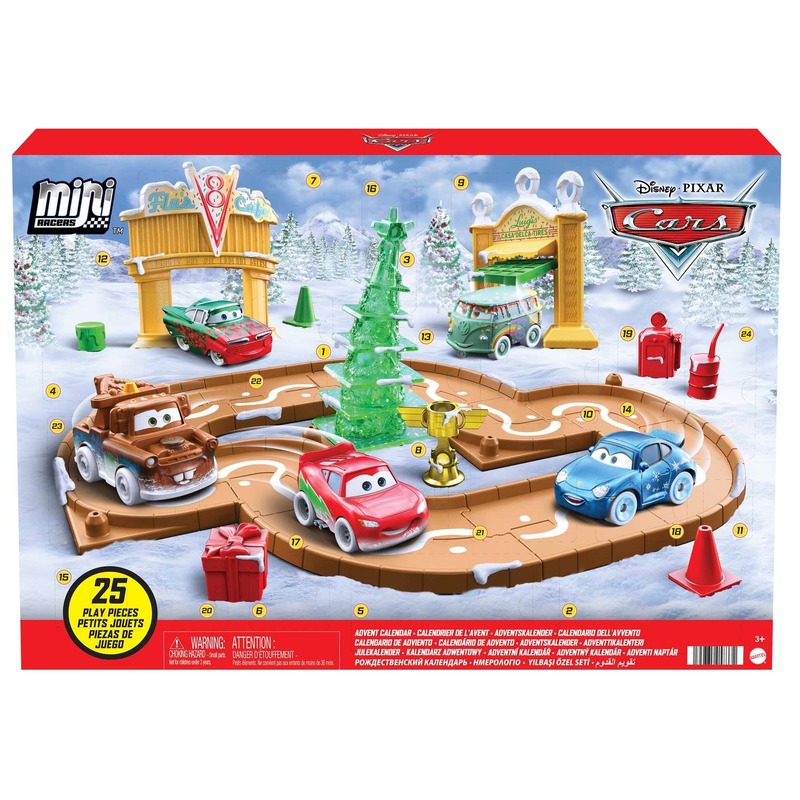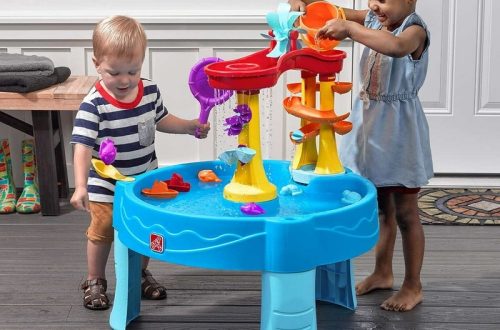Overview of Current Trends in Toy Cars
The market for toy cars for boys is constantly evolving. Recent trends have shifted towards more interactive and engaging models. Toy cars are no longer just simple, passive toys. They now feature intricate designs and functionalities that mimic real cars.
Interest has grown in toy cars that offer remote control capabilities. This feature allows for increased motor skill development and interactive play. Moreover, with advancements in technology, some toy cars now come with apps. These apps enable children to control and customize the car’s features via smartphones or tablets.
Another significant trend is the incorporation of educational elements. Many toy cars are designed to teach children basic concepts of physics through play. They might include modular pieces for assembly, introducing the basics of engineering to young minds.
Toy cars with themes from popular media franchises continue to be a hit. They capture the imaginations of children, making playtime more relatable and exciting.
Collectibility also remains important, with limited edition releases and collectible series. These often become part of hobbies for both kids and adults.
Overall, the current trends in toy cars for boys emphasize interactivity, education, and a connection to digital and media influences. Such features make these toys appealing not just as playthings but also as tools for learning and development.

Innovative Design Features in New Toy Car Models
As the demand for more engaging and interactive toy cars for boys increases, manufacturers are introducing innovative designs. New models now boast features that enhance both playability and realism. Notably, dynamic suspension systems have been integrated into some toy cars. These systems mimic real car movements, making play experiences more immersive.
Another exciting feature is the configurable body parts. These allow children to customize their toy cars. They can modify body shapes, colors, and even wheel types. This customization encourages creativity and gives a personal touch to their toy vehicles.
LED lighting systems are also becoming common in new toy car models. These lights add visual appeal and can mimic real car lights, which fascinate children. Plus, they make the toy cars fun to play with in dimly lit environments.
Lastly, there’s an increase in the use of magnetic levitation technology. Some high-end toy cars now use this tech to float above the ground slightly. It reduces friction and allows smoother and faster movement, much to the delight of young users.
These innovative features not only make toy cars more attractive but also extend their play value and appeal. As they evolve, these toy cars offer kids new forms of engagement and challenge, contributing significantly to their market popularity.
Impact of Technology on Toy Car Development
Technology has greatly shaped the development of toy cars for boys. Modern toy cars blend cutting-edge features with traditional play to offer unique experiences. Here are some key technological advancements impacting toy car development:
Augmented Reality (AR): AR adds a virtual layer to the physical play area. Kids can race their cars in a digitally-enhanced world, interacting with virtual objects.
Voice Control: New toy cars now respond to voice commands. This tech fosters interactive play and advances cognitive skills.
Artificial Intelligence (AI): AI-powered toy cars adapt to how children play. They can navigate obstacles and learn from user behavior, offering a tailored play experience.
Sensors and Responsiveness: Today’s toy cars for boys come with built-in sensors. They detect motion and react to their environment, mimicking real-life car responses.
3D Printing: Customization reaches new heights with 3D-printed toy cars. Kids can design and print their vehicle parts, exploring their creativity.
Smart Connectivity: With Wi-Fi or Bluetooth, toy cars connect to devices for remote control and updates. This tech keeps the toys current with the latest features.
Adoption of these technologies in toy car development not only fuels children’s imaginations but also teaches them about modern tech. It prepares them for a future where technology is integral to everyday life.
Eco-Friendly and Sustainable Toy Cars
As we shift towards a more environmentally conscious society, toy car manufacturers are keeping pace. Eco-friendly and sustainable options in the market for toy cars for boys are on the rise. Parents and educators who value sustainability are driving this trend. They seek toys that are both fun and responsible. Here are a few ways manufacturers are making toy cars greener:
Biodegradable Materials: Instead of traditional plastics, some toy cars now use materials that break down over time. This reduces waste and is less harmful to the planet.
Recycled Plastics: The use of recycled plastics in toy car production is growing. It helps in conserving resources and reducing landfill waste.
Renewable Energy Toys: Some toy cars for boys are designed to run on renewable energy. Solar panels or hand cranks can power these cars, teaching kids about alternative energy.
Non-Toxic Paints: The colors on eco-friendly toy cars come from non-toxic paints. These are safer for kids and the environment.
Package Reduction: Companies are minimizing packaging. They use recycled materials and simplify designs to lower their carbon footprint.
By choosing these eco-friendly toy cars, parents can instill environmental values in their children. These toys prove that playtime can be both enjoyable and eco-conscious. They help shape a future generation that values and protects our planet.

The Role of Educational Toy Cars in Learning
Toy cars for boys are not just for play. They can also be powerful educational tools. These toys can introduce young learners to various STEM (Science, Technology, Engineering, and Mathematics) concepts. They do so in a hands-on, engaging manner.
One key educational benefit of toy cars is the development of problem-solving skills. Kids often figure out how to operate or troubleshoot these toys on their own. This fosters independence and critical thinking skills. Additionally, many toy cars come with assembly kits. These require boys to follow instructions and apply logical thinking.
Toy cars for boys also enhance fine motor skills and hand-eye coordination. As children navigate these toys around obstacles, they refine their physical abilities. The use of remote-controlled cars heightens this experience, demanding precision and control.
Moreover, some educational toy cars are designed to teach basic physics concepts. For example, cars that showcase the effects of gravity, friction, or propulsion help children understand these principles in a practical way.
In conclusion, educational toy cars for boys provide essential learning benefits. They make complex subjects accessible and fun. This prepares young learners for more advanced education in STEM fields in the future.
Popular Brands and Latest Releases
In the realm of toy cars for boys, several brands stand out for their innovation and popularity. These brands are continually releasing new models that captivate young minds and foster engaging play. Here’s a look at some popular brands and their latest offerings in the toy car market.
Hot Wheels remains a dominating force, known for their diverse range and thematic designs. Their latest series often incorporate pop culture references and cutting-edge design elements. Hot Wheels’ recent releases include track sets with looping action and cars with color-changing features that provide hours of entertainment.
LEGO Technic sets offer not just the thrill of playing with toy cars but the challenge of building them. Their newer sets echo real-life vehicle designs and mechanics, encouraging children to develop engineering skills as they play.
Matchbox has also kept pace, with detailed collections that reflect both classic and modern vehicles. They prioritize durability and realism, allowing kids to create their own miniature worlds.
Anki Overdrive revolutionizes the toy car experience with digital enhancements and artificial intelligence, providing a blend of physical and virtual play.
Playmobil is renowned for their themed sets, including cars that complement their wide range of play scenarios, from urban to adventure.
Additionally, Disney’s Cars franchise continues to release new models, feeding off the movies’ success. These character-based cars are a hit with fans, allowing them to re-enact their favorite scenes.
Each brand aims to captivate with something unique, whether it’s collectibility, buildability, or advanced features. The latest releases not only follow current trends but also set new ones, indicating healthy competition and innovation within the industry. Parents should keep an eye on these brands for upcoming holiday seasons and gifting occasions, as they consistently offer fresh and exciting options for toy cars enthusiasts.
Future Predictions for the Toy Car Industry
As a dynamic segment of the toy market, the toy car industry is poised for exciting changes. With technological integration already transforming these playful vehicles, future predictions include further advancements that could redefine the way children play with toy cars for boys. Here are some anticipated trends:
Advanced Integration of AI and Machine Learning
Artificial Intelligence (AI) and machine learning will become more sophisticated in toy cars. Future models could offer personalized play experiences, adapting to a child’s skills and learning curve. These smart cars may even interact with other AI toys, creating a mesh of interconnected play.

Emphasis on AR and VR Experiences
Augmented reality (AR) and virtual reality (VR) will likely play a larger role. Toy cars could be paired with AR apps that superimpose digital racetracks into the real world. VR could immerse children in a driver’s seat perspective, offering virtual driving lessons and adventures.
More Eco-Friendly Innovations
As sustainability becomes a priority, we should see an uptick in renewable energy-powered toy cars. Obsolete batteries will give way to solar-powered models or those using other green technologies. The use of environmental-friendly materials will also become a standard, not just an option.
Growth in Educational Focus
Educational toy cars that incorporate STEM learning are expected to grow in popularity. They will feature more advanced real-world scenario simulations. This could include coding elements that allow boys to program their toy cars, learning computational thinking through play.
Enhanced Customization and Personalization
Customization will go beyond aesthetics, enabling kids to modify performance and behavior of their toy cars. With 3D printing becoming more accessible, children might print parts and make modifications at home, further nurturing creativity and engineering interest.
Connectivity and Smart Features
Future toy cars for boys will boast enhanced connectivity. With IoT (Internet of Things) advancements, toy cars will interact with smart home devices, respond to voice commands more accurately, and receive updates to stay relevant over time.
As the industry moves forward, parents and educators will find toy cars that are not only more engaging and interactive, but also more in tune with educational needs and environmental concerns. This evolution will ensure that toy cars for boys remain an essential part of children’s play and learning landscape far into the future.
As you embark on your holiday shopping journey, remember the factors we’ve discussed. Organic and thoughtful decisions lead to the best gift-giving experiences. Wishing you and your family a joyous Christmas filled with laughter, love, and lots of imaginative play with toy cars!




